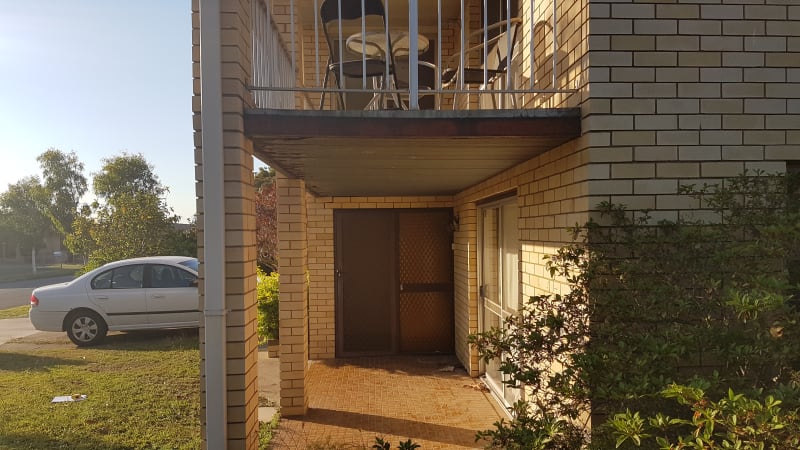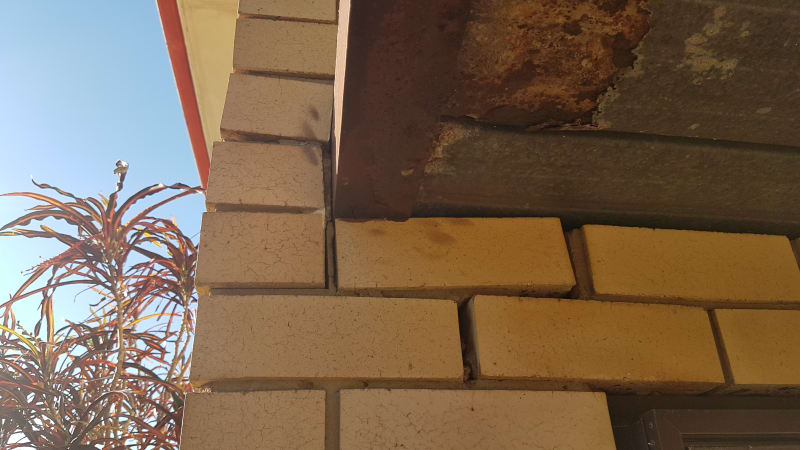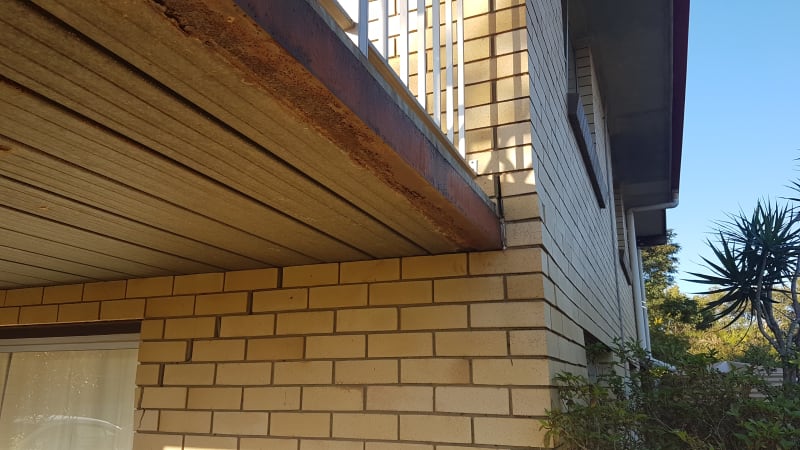Warramoos
Structural
- Sep 19, 2019
- 8
Hi All,
I was looking at some brick failure the other day, and thought I'd ask if anyone had seen similar and or know the cause of the failure. See photos below.
There is an old bondek slab at the front of a house forming a small veranda. The bricks have localized cracking where it interfaces with the veranda. It looks as if the slab has exerted pressure on the bricks and pushed them out of alignment. My theory is the steel edge beam supporting the edge of the slab is rusting between the slab and beam. The rust is causing the beam to expand and push away from the slab, exerting a force on the bricks and pushing them out of alignment. Just a theory, but not sure if there maybe other forces at work I'm not aware of. I don't think its a foundation issue as the movement is localized around the top wall around the slab. Any other theories?



Thanks again for your help.
I was looking at some brick failure the other day, and thought I'd ask if anyone had seen similar and or know the cause of the failure. See photos below.
There is an old bondek slab at the front of a house forming a small veranda. The bricks have localized cracking where it interfaces with the veranda. It looks as if the slab has exerted pressure on the bricks and pushed them out of alignment. My theory is the steel edge beam supporting the edge of the slab is rusting between the slab and beam. The rust is causing the beam to expand and push away from the slab, exerting a force on the bricks and pushing them out of alignment. Just a theory, but not sure if there maybe other forces at work I'm not aware of. I don't think its a foundation issue as the movement is localized around the top wall around the slab. Any other theories?



Thanks again for your help.


